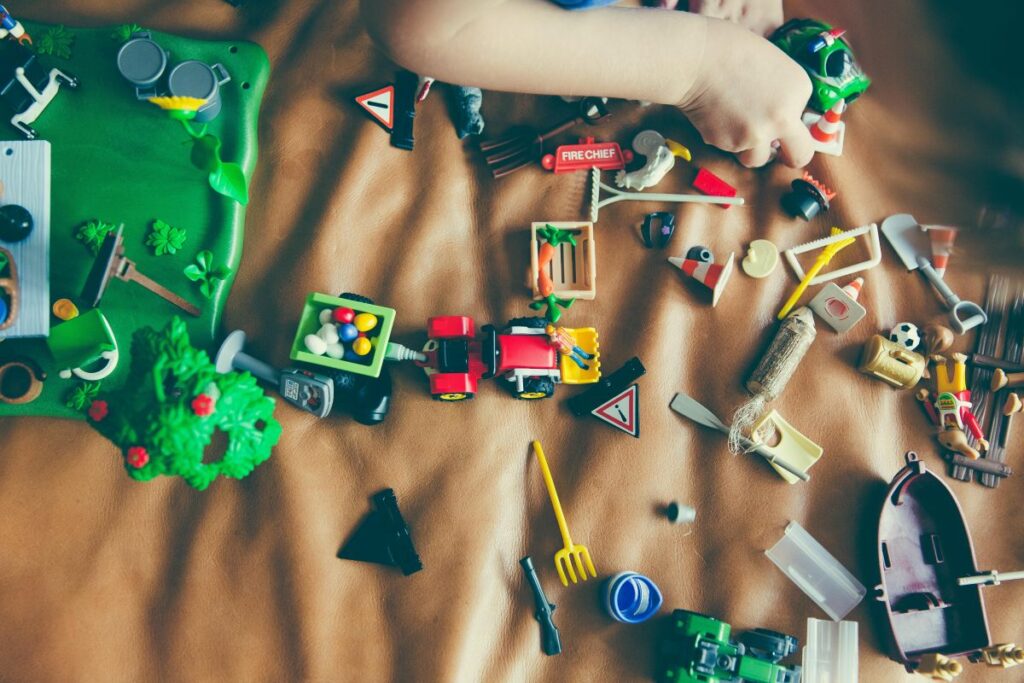A study conducted by the Toy Industries of Europe (TIE) found that 86% of toys sold online by non-European ecommerce sellers were dangerous to children, and 96% of them weren’t compliant with EU safety requirements.
These are massive numbers and underscore the importance of shopping responsibly online and being careful with what you buy and give to your children.
Examining the Results of the Study
The TIE study involved the organization purchasing 70 unbranded or unknown-brand toys from third-party sellers. These were on the first page of search results on online platforms, including Amazon Marketplace, AliExpress, CDiscount, Temu, Shein, Joom, and Fruugo.
After receiving the toys, they were sent to a third-party lab for testing against EU requirements. The results were disappointing, as 96% of the toys weren’t compliant, and 86% of them were deemed to have serious safety issues that may harm children.
There were several safety risks identified in the study, as many of the toys:
- Contained or released small parts during testing, which children could choke on.
- Offered easy access to batteries, which may be incredibly harmful if swallowed.
- Featured suction cups that release, which may get stuck in children’s throats.
- Released strong and small magnets, which can cause serious internal injuries (or worse) if swallowed.
- Contained electrical risks like poor wiring or short circuits.
- Features cords that were too long, posing a strangulation risk.
- Included sharp edges that could cut a child.
Some of the toys also had incorrect markings or safety warnings, as well as questionable certifications.
The Online Toy Safety Problem Isn’t New
While these results are alarming, they’re unfortunately not new. TIE ran a similar study back in 2024, where it found that 80% of toys sold by third-party sellers both in and out of Europe failed to meet EU safety standards.
Not only that, but many of the toys purchased in the 2025 study were seemingly identical to toys bought back in 2024, sometimes even from the same seller. Despite these toys failing safety tests a year ago (and doing so again this year), it seems the study’s findings did little to deter these merchants from continuing to sell dangerous toys.
Who’s Responsible for the Unsafe Toys?

So who’s to blame for these unsafe toys being sold to areas where they’re clearly not up to standards?
While it’s the third-party seller that actually sells the product, the Digital Services Act in Europe holds the online platforms accountable for making sure that third-party sellers obey the law. The exact obligations these platforms have depend on the size of the business.
In the USA, where liability falls depends on where you are. The country lacks comprehensive federal legislation about marketplace accountability, so different states have different rules.
Some states, such as Minnesota, Texas, and Arizona, don’t hold online marketplaces liable for products sold by third-party sellers, while other states, such as Illinois, do. However, keep in mind that this is a constantly changing and evolving landscape, and several other states, like California, New York, and Nebraska, are considering extending product liability to marketplaces.
What This Means For Parents Buying Toys Online
The results of this study show the importance of being careful when buying toys online for children. Before you buy, it’s crucial to:
- Research the seller and look for reviews, contact information, a website, or anything else that boosts their legitimacy and gives you peace of mind.
- Check for safety warnings and certifications. But at the same time, don’t simply assume that something “certified” is good. Do your homework and find out what the certification is and what it means.
- Look through the images to ensure the toy being sold is what the listing describes.
Even if you’re satisfied with the seller, photos, and ad, it’s still important to give the toy a check when it arrives before handing it off to your child to play with. You should:
- Ensure the toy looks like you expected and is made with the same material.
- Doesn’t have any small and/or loose parts that your child could choke on or hurt themselves with.
- Check for any damage to the toy.
- Read through all warnings or instructions to learn about proper toy use.
If you suspect a toy isn’t safe or is outright illegal, don’t hesitate to report it to the proper authority in your area (such as the Consumer Product Safety Commission in the USA) and consider leaving a review so other parents don’t make the same mistake.
The Importance of Shopping Online Responsibly in General
In addition to being careful online for the safety of your children, shopping responsibly is also important when it comes to avoiding the growing prevalence of online fraud. According to the Federal Trade Commission (FTC), consumers reported $12.5 billion in losses to fraud in 2024, which is up 25% over the prior year.
The data showed that online shopping issues were the second most commonly reported type of fraud, only behind imposter scams. So whether you’re shopping online for your child or yourself, it’s worth it to watch out for questionable sellers and products.











